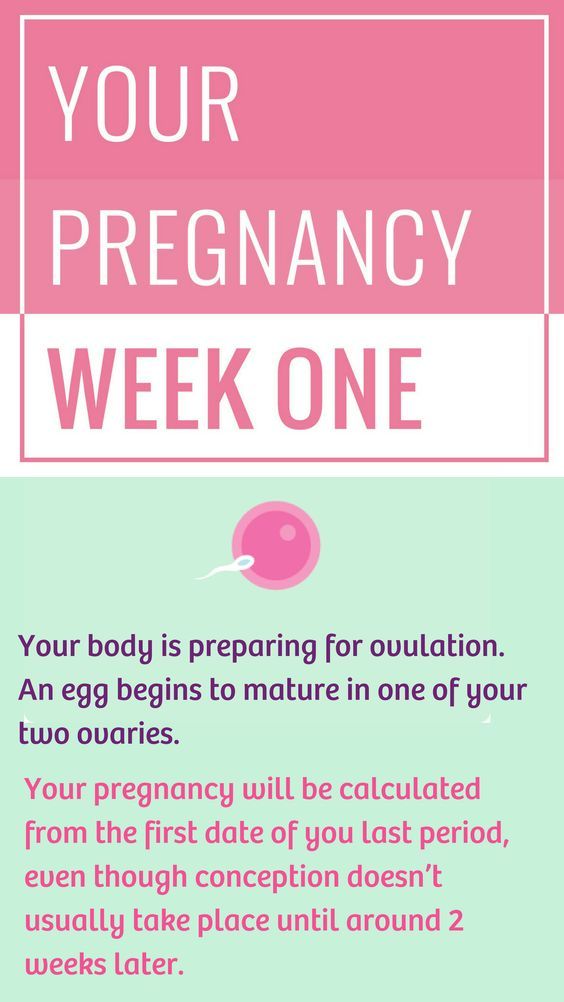What kind of discharge do you have in early pregnancy
What early pregnancy discharge looks like and how to recognize it
An increase in vaginal discharge can be a sign of pregnancy. It is typically a thin clear, or milky white liquid. Changes to discharge appearance can indicate several health conditions.
Anyone with a vagina can experience discharge from this part of the body.
Vaginal discharge is normal, and it can tell a person a lot about their body, including whether they have an infection, where they are in their menstrual cycle, and even their level of hydration.
A change in the amount of vaginal discharge can also sometimes indicate pregnancy.
In this article, we look at how to identify the vaginal discharge typical in early pregnancy. We also discuss other symptoms of early pregnancy, other factors that can affect discharge, and when to see a doctor.
Vaginal discharge is the normal substance that comes out of a person’s vagina. It is an umbrella term that encompasses any fluid — other than menstrual blood or urine — that the vagina secretes, both healthy and unhealthy.
Cervical mucus refers specifically to the substance that the cervix releases.
Hormones make a person’s cervix produce mucus. Shifts in a person’s hormone levels can occur during certain phases of the menstrual cycle or pregnancy. These can change the color, texture, and amount of discharge.
Healthy vaginal discharge is usually thin and clear or milky white with only a mild, inoffensive odor.
Unhealthy discharge can:
- be foul smelling
- be green or yellow
- be lumpy
- accompany itchiness around the vagina
- accompany pain during urination
A person should see a doctor if they experience unhealthy discharge because it can signal an infection.
Early in a pregnancy, a person might experience a slight increase in vaginal discharge. Pregnancy causes higher levels of estrogen, leading the body to produce more discharge and increase the blood flow to the uterus and vagina.
Increased discharge also helps protect the fetus by preventing external infections from traveling up from the vagina to the uterus.
As pregnancy continues, a person will continue to experience more discharge up until delivery.
What does it look like?
Healthy vaginal discharge during pregnancy is called leukorrhea. It is similar to everyday discharge, meaning that it is thin, clear or milky white, and smells only mildly or not at all.
However, pregnancy can cause the amount of discharge to increase.
Infections, including yeast infections or sexually transmitted infections (STIs), can affect vaginal discharge, so it is important to monitor discharge as a health indicator.
Below are a few examples of unhealthy discharge and the diseases or infections that they may indicate.
| Discharge | Cause |
| Thick and chunky, similar to cottage cheese | Candidiasis, or thrush, which is a yeast infection common during pregnancy |
| Fishy smelling | Bacterial vaginosis |
| Green or yellow and possibly frothy | Trichomoniasis |
| Increased discharge with pelvic pain or bleeding | Chlamydia or gonorrhea |
| Increased discharge from blisters or sores | Genital herpes |
Many signs — some subtle and some less so — can indicate pregnancy in the early stages.
A person’s period halting is the clearest indicator that they may be pregnant. However, menstruation can vary due to many other factors, including stress, birth control, and weight loss.
Learn about other possible causes of missing a period.
These other signs and symptoms can help identify pregnancy:
- tender and swollen breasts
- morning sickness
- cravings or distaste for certain foods
- increase in fatigue
- increased urination
- headaches
- constipation
- heartburn
- mood swings
- unexplained weight gain or loss
If a person had sex without effective birth control or barrier methods and is experiencing these symptoms or thinks that they might be pregnant, they should consider getting a pregnancy test.
There are two ways to test for pregnancy: urine testing and blood testing.
A person can test their urine at home or seek a doctor’s help. They should be able to buy a home pregnancy test relatively cheaply from a local pharmacy.
To do the urine test, a person catches their urine midstream on the test stick, which will check for the presence of the hormone human chorionic gonadotropin (hCG) in the urine. This hormone is elevated during pregnancy.
A home pregnancy test will give a “yes” or “no” result, depending on the presence of hCG.
A urine test at a doctor’s office uses the same process, but instead of catching the pee on a testing stick midstream, a person will pee in a cup for a lab to analyze.
Home pregnancy tests are 97% accurate if a person uses them correctly.
Blood pregnancy tests are much more accurate and can tell a person more about their hCG level. This test will reveal to a person the exact amount of hCG in their blood. A blood test can also detect pregnancy earlier than a urine test.
However, a doctor must perform a blood pregnancy test.
A person should see a doctor if they are experiencing signs and symptoms of pregnancy. A person can take their own home pregnancy test, but it is still wise to follow up with a doctor, no matter the result.
Regardless of pregnancy concerns, if a person notices a change in their vaginal discharge, they should speak with a doctor, who can help diagnose the issue and prescribe any necessary treatment. Seeking advice is particularly important if changes in vaginal discharge accompany pain or itchiness.
A change in the amount of vaginal discharge can be a sign of early pregnancy.
However, other changes in the color or texture of vaginal discharge are more likely due to an infection, and a person should seek help from a healthcare provider to treat them.
Vaginal discharge during pregnancy | BabyCenter
You may notice an increase in white creamy discharge early in pregnancy, due to higher levels of estrogen. White vaginal discharge (called leucorrhea) is nothing to worry about: This early pregnancy discharge is normal and can be clear to milky white, thin or thick, and mild-smelling or odorless. Vaginal discharge that's green, smells unpleasant, causes pain or itching, or seems unusual in any other way could be a sign of infection or another problem.
Is creamy white discharge normal during pregnancy?
Yes. It's perfectly normal to have a mild-smelling creamy white discharge even before pregnancy. (It's called leukorrhea.) There's just a lot more of it during pregnancy because your body is producing more estrogen, which signals the vagina to produce more discharge.
This discharge is made up of secretions from the cervix and vagina, old cells, and normal vaginal bacteria. Healthy vaginal discharge is usually:
- Clear to milky white
- Thin to thick or mucus-like
- Mild-smelling or odorless
You'll probably also notice more vaginal discharge as you approach labor, although it's likely to look somewhat different (more on that below).
When to call your doctor or midwife about vaginal discharge
Anything that's unlike the normal white discharge you're used to is worth mentioning to your provider. Vaginal discharge that's different – in color, smell, or amount – could be a sign of a vaginal infection or other problem. (Vaginal infections are more common during pregnancy.)
(Vaginal infections are more common during pregnancy.)
Even if you don't have other common symptoms such as irritation, itching, or burning, you could have a vaginal or sexually transmitted infection.
"Always mention discharge to your doctor, especially if there's a change," says Layan Alrahmani, ob-gyn and maternal-fetal medicine specialist in Chicago. "Chances are this is normal pregnancy discharge, but it can be a vaginal or cervical infection that requires treatment."
Call your doctor or midwife right away if:
- You're not yet 37 weeks pregnant and notice an increase in the amount of discharge, or a change in the type of discharge. For example, more vaginal discharge than usual can be a sign of preterm labor. And if you're continuously leaking clear and watery fluid, this can be a sign that your water has broken.
- Your vulva looks inflamed, or you have an odorless, whitish discharge that's causing pain with urination or sex, soreness, itching, or burning.
 This means you could have a yeast infection.
This means you could have a yeast infection. - You have thin white or gray discharge with a strong fishy smell, which may be more noticeable after sex (when the discharge mixes with semen). This might be a condition called bacterial vaginosis.
- Your discharge is yellow or green and frothy with an unpleasant odor. This may be a sign of trichomoniasis, a common sexually transmitted infection. Other possible symptoms of trichomoniasis (or trich) include a red, irritated, or itchy vulva or vagina and discomfort while urinating or during intercourse.
- Your discharge has a strong and noticeable odor or has changed in color, amount, or consistency from your normal vaginal discharge.
Advertisement | page continues below
If you're having discomfort or you think you have an infection, don't try to treat yourself with over-the-counter medications or feminine hygiene products. Many of these products can aggravate an already sensitive area. Instead, see your healthcare provider.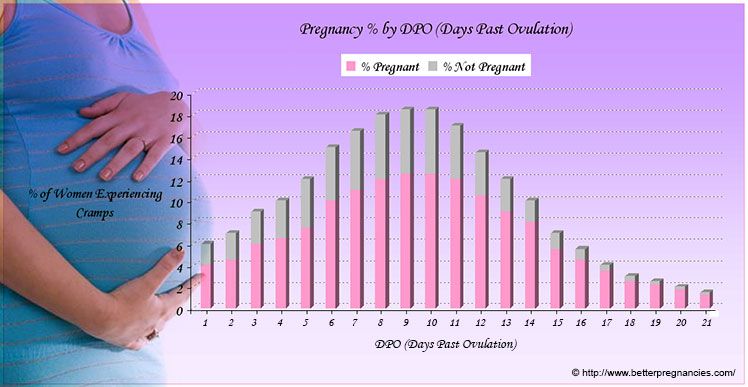
Typically, no. Vaginal discharge is common anytime. And while many women notice an increase in vaginal discharge during pregnancy, you're not likely to spot this symptom in the week or two just after conception.
Changes in vaginal discharge isn't one of the early pregnancy symptoms that women commonly report during those first few weeks, either. If you suspect you might be pregnant, your best bet is to take a pregnancy test around the time you would expect your period.
How can I tell if this is vaginal discharge or my mucus plug?
The mucus plug is a collection of gelatinous secretions from your cervix. These secretions fill the cervical canal in early pregnancy and create a protective barrier that stays in place for most of pregnancy.
As you get closer to delivery and your cervix begins to thin out and open up (effacement and dilation), these mucus-like secretions may come out of your vagina. This can be a sign of early labor.
Rest assured, losing your mucus plug isn't like a cork popping. Labor still progresses on its own timeline, and your baby remains well protected.
Labor still progresses on its own timeline, and your baby remains well protected.
Not every expecting mom experiences losing their mucus plug. If you do, it might seem like an increased amount of vaginal discharge over the course of a few days, or a glob of thickened mucus that's clear, pinkish, brownish, or tinged with a bit of blood.
How can I tell if this is vaginal discharge or amniotic fluid?
Regular discharge comes out sporadically in small amounts, but amniotic fluid leaks out continuously once your water breaks. Amniotic fluid is usually clear or slightly yellowish, watery, and odorless or slightly sweet-smelling. When your water breaks, amniotic fluid may come out as a leak or trickle, or in a big, dramatic gush. Either way, it will continue to leak out until you have your baby.
If you think it's possible you're leaking amniotic fluid, contact your provider immediately. It's important to find out if you might be going into labor.
If you're less than 34 weeks pregnant and you think your water has broken, you may need steroid shots and other medications to delay labor, speed up the development of your baby's lungs, and protect against infection.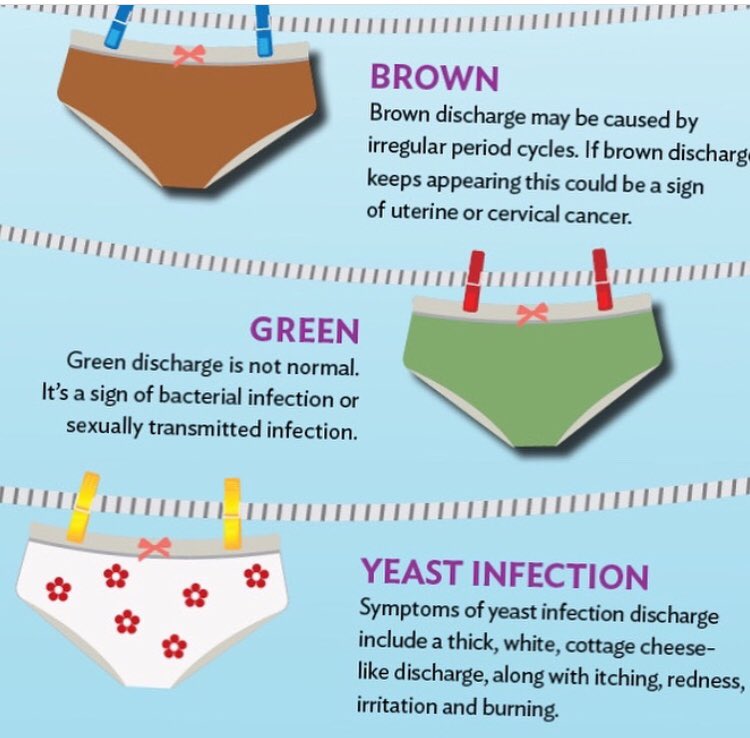
What can I do about vaginal discharge during pregnancy?
There's nothing you need to do about your body's normal vaginal discharge. You can wear panty liners to absorb discharge if you want to, but it's definitely not necessary.
Here are some ways to keep your genital area healthy:
- Always wipe from front to back.
- Change out of sweaty workout clothes or wet swimsuits promptly.
- If your vulva is irritated, avoid tight pants, leggings, and underwear made with synthetic materials.
- Avoid bubble bath, scented pads, scented toilet paper, feminine hygiene sprays, and scented or deodorant soaps. These scents can be irritating to your sensitive areas.
- Don't use tampons during pregnancy. If you're spotting or bleeding, call your provider.
- Don't douche. Douching can upset the normal balance of bacteria in your vagina and increase the likelihood of infection.
Learn more:
- Frequent urination during pregnancy
- Pregnancy symptoms you should never ignore
- Prenatal testing
Was this article helpful?
Yes
No
ᐉ Discharge during pregnancy ➡ What are the discharge at different times
Pregnancy is a time of serious physiological restructuring of a woman's body.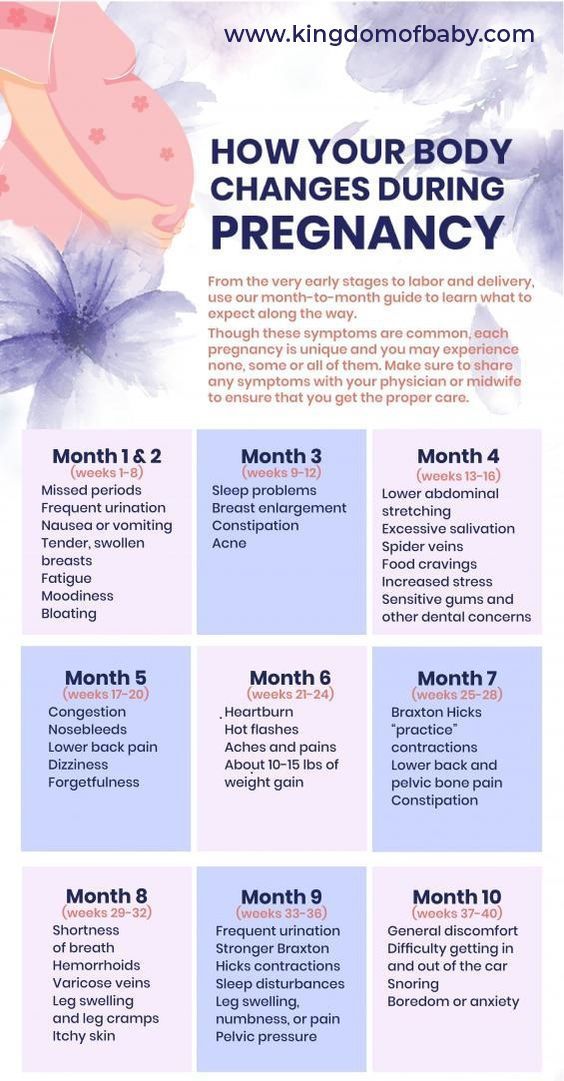 Under the influence of hormones, the body of the expectant mother changes, adaptive-protective mechanisms are activated, the work of all organs and systems is directed to bearing a child and successful delivery. Changes in the nature of vaginal discharge is one of the reasons for concern during early and late pregnancy. Discharge during pregnancy can be dark, light, brown, bloody, spotting, not typically liquid and plentiful, with or without odor - which of them are considered normal, and which ones need to urgently run to the gynecology? Read our article.
Under the influence of hormones, the body of the expectant mother changes, adaptive-protective mechanisms are activated, the work of all organs and systems is directed to bearing a child and successful delivery. Changes in the nature of vaginal discharge is one of the reasons for concern during early and late pregnancy. Discharge during pregnancy can be dark, light, brown, bloody, spotting, not typically liquid and plentiful, with or without odor - which of them are considered normal, and which ones need to urgently run to the gynecology? Read our article.
What is normal discharge during pregnancy?
During pregnancy, the level of activity of hormones increases, the metabolism accelerates, in connection with this, the volume of vaginal discharge may increase.
What should be the normal discharge during pregnancy:
- Transparent, homogeneous mucous, not viscous.
- Color whitish or slightly yellowish.
- No repulsive odor. Normally, the aroma is slightly sour.

- May be more abundant than usual in quantity, especially in the first weeks (as during ovulation, before conception).
- Without other symptoms - itching, burning, redness, hyperemia and swelling of the vulva, pain and discomfort.
During late pregnancy, the discharge is mixed with urine - the result of incontinence due to the pressure of the growing uterus on the bladder. This is also a variant of the norm, just try to visit the toilet more often.
When should you see a doctor for discharge
During pregnancy, it is important to periodically see an obstetrician-gynecologist, and the first question that the doctor asks at the consultation is is there any unusual discharge? It is by the nature of the vaginal secret that one can judge the course of pregnancy, the presence of hormonal imbalance, inflammation and other health problems. Signs of pathological discharge:
- Curdled consistency, the presence of white clots with an unpleasant sour smell - with vaginal candidiasis.
 This is a fungal infection that is activated against the background of hormonal changes, occurs in 30% of women during pregnancy. In addition to the characteristic discharge, thrush is accompanied by itching, redness and rashes in the vulva.
This is a fungal infection that is activated against the background of hormonal changes, occurs in 30% of women during pregnancy. In addition to the characteristic discharge, thrush is accompanied by itching, redness and rashes in the vulva. - Unpleasant aroma, atypical color and consistency are signs of dysbacteriosis or infection with bacteria, parasites. The most common sexually transmitted infections are chlamydia, Trichomonas, and gonococci. Atypical discharge is accompanied by pain, itching, skin rashes, ulcers, swollen lymph nodes in the groin. During pregnancy, STIs are especially dangerous: they can cause miscarriage, premature birth, placental insufficiency and abnormal development of the unborn child. If infections are detected in a pregnant woman, treatment is necessary.
- Bloody, brown discharge, sometimes with clots - may occur with the threat of fetal loss, ectopic pregnancy or the presence of pathologies of the cervix. Blood discharge during pregnancy is usually accompanied by pain in the lower abdomen - with such symptoms, urgent medical attention is needed.
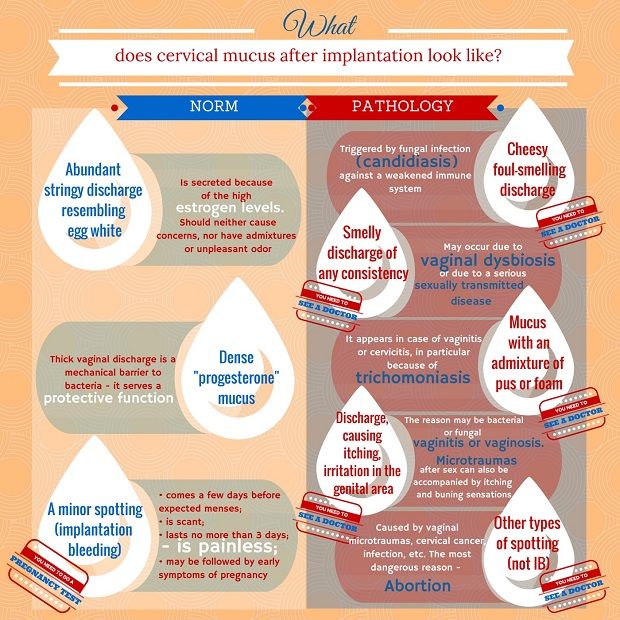
To find out the exact cause of changes in the vaginal secretion, a doctor's consultation and examination (ultrasound, tests) is necessary.
What can be discharge during early pregnancy?
Normal discharge in early pregnancy - translucent, whitish or yellowish, without foreign smell, itching and skin irritation. During the first month, the secret is released more abundantly than always, and from 5 to 20 weeks, its volume decreases to the usual, the consistency becomes more liquid and transparent.
In the first days of pregnancy, due to slight damage to the blood vessels of the myometrium during the implantation of a fertilized egg, there may be a spotting brown discharge. Usually they are scarce and short-term, pass in a couple of days.
Can there be spotting during early pregnancy - a frequent topic of discussion in women's forums. If the bleeding is severe and even more so accompanied by pain, urgently call an ambulance. The cause may be a threatened miscarriage or a miscarriage that has already begun, a tubal pregnancy, or a hydatidiform mole.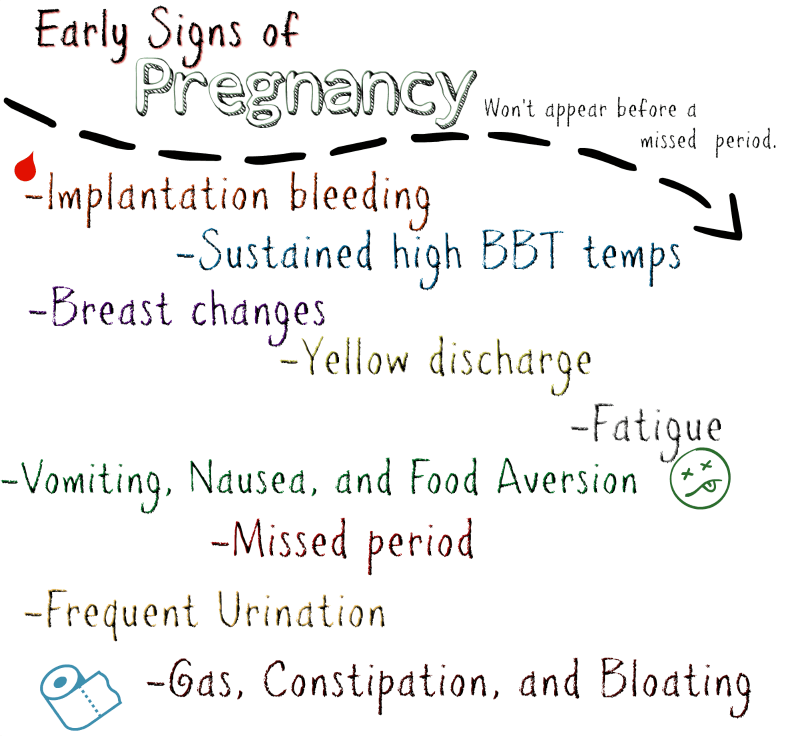
Brown discharge during early pregnancy (at 5, 6, 7 weeks), even without pain and foreign smell, is another reason not to postpone a visit to the gynecologist. Such symptoms often indicate a threatened miscarriage or missed pregnancy.
Discharge in late pregnancy
From the 20th week of pregnancy, a whitish discharge without blood, clots or foreign smell is normal. In the last three months, from 7 to 9, you need to pay special attention to the quality and volume of vaginal secretions:
- Too abundant, watery discharge may be the result of leakage of amniotic fluid. The risk of such a problem increases from 18-20 weeks and later. Amniotic fluid is released when the fetal membrane is ruptured, it leaks especially strongly when moving or changing position. If you find this - do not delay a visit to the doctor.
- Spots of gray or yellowish coloration on linen in combination with liquid, non-viscous discharge may indicate the onset of labor - the release of the mucous plug and the outflow of amniotic fluid.
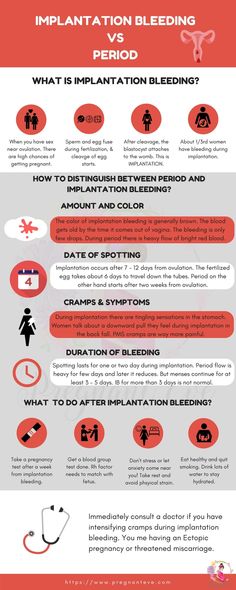 Need medical help.
Need medical help. - The presence of brown or bloody discharge during late pregnancy is one of the likely signs of a dangerous pathology, premature placental abruption.
Discharge during pregnancy: differences in color
The color of vaginal discharge, as well as other characteristics (smell, volume, density) is an important indicator of health and the absence of complications during pregnancy. Normally, the secret is colorless, slightly whitish or yellowish. Color changes should be a concern:
- Greenish-yellow, frothy discharge is a sign of trichomoniasis.
- Greyish-white secret of a sticky, frothy consistency with a fishy smell - a manifestation of gardnerellosis.
- Greenish-yellow, mucous or purulent, sometimes blood-tinged symptoms of gonorrhea.
- White or yellow, thick discharge with lumps - a sign of candidiasis.
- Brown, spotting, pink or red mucus (not during the first weeks of pregnancy, but later) - indicate the threat of interruption, uterine polyps and other disorders.

If there are changes in the shade and other characteristics of the discharge during pregnancy, an examination is necessary. Upon confirmation of the diagnosis, a course of therapy will be required.
Spotting during pregnancy
Even slight spotting during pregnancy, regardless of the duration, requires a doctor's consultation. Bleeding in the first 12 weeks may result in miscarriage. In the second and third trimester, blood can signal a uterine rupture along the scar, damage to the cervix, placental abruption, or the onset of preterm labor. Such conditions pose a threat to life for mother and baby.
Blood discharge during pregnancy is not necessarily a sign of the onset of a miscarriage and 100% loss of the fetus. With timely access to a doctor, in many cases it is possible to save the child. This may require hospitalization with the appointment of hormone therapy, magnesium drips and other supportive measures.
Be careful not to ignore warning signs! Regular visits to the gynecologist will help maintain the health of mother and child.
articles of the Oxford Medical clinic Kyiv
Contents:
-
What discharge during pregnancy is considered normal?
-
When should you see a doctor for discharge?
-
Discharge during early pregnancy
-
Discharge during late pregnancy
-
Discharge during pregnancy by color 0121
During pregnancy, a woman's body undergoes a number of physiological changes - her body changes, adapts to the bearing of the baby and future childbirth. Changes can also occur with vaginal discharge. After conception, their number or color may become different, which often makes a woman worry. In order not to worry for no reason, but also not to miss a possible reason to see a doctor, you need to know which discharges are normal and which are not.

What discharge during pregnancy is considered normal?
The nature of the discharge at different stages of pregnancy may vary slightly. The following are considered a variant of the norm:
-
transparent or white discharge;
-
odor free;
-
not exceeding the usual volume;
-
not accompanied by itching, burning or other painful symptoms.
At the same time, in the first 2-4 weeks, the daily discharge may increase slightly and become thicker. It is also possible the appearance of light spotting within a few hours or a day, which occurs as a result of the implantation of the embryo to the uterine wall.
When should you see a doctor for discharge?
During pregnancy, a woman is advised to visit a gynecologist regularly for examinations and tests.
 First, consultations are prescribed once a month, and then once every 2 weeks. This allows you to carefully monitor the health of the pregnant woman and the development of the fetus. But, if discomfort appears, you need to see a doctor as soon as possible.
First, consultations are prescribed once a month, and then once every 2 weeks. This allows you to carefully monitor the health of the pregnant woman and the development of the fetus. But, if discomfort appears, you need to see a doctor as soon as possible. One of the alarming symptoms is the appearance of atypical discharge:
-
yellow, green, brown;
-
bloody;
-
thick;
-
too abundant;
-
slimy;
-
malodorous;
-
accompanied by itching, burning and other symptoms.
Such a change in the nature of the discharge may be associated with the development of an inflammatory or infectious disease, as well as pregnancy complications.
 To find out the exact cause, you need to do tests, conduct an ultrasound and, if necessary, other studies.
To find out the exact cause, you need to do tests, conduct an ultrasound and, if necessary, other studies. Discharge during early pregnancy
When conception occurs, changes begin in the body. First of all, the synthesis of the hormone progesterone increases and blood flow to the pelvic organs increases. These processes are often accompanied by profuse vaginal discharge. They can be translucent, white or with a slight yellowish tint. There should be no unpleasant odor or skin irritation.
Shortly thereafter, progesterone levels decrease and estrogen levels rise. At this time, a mucous plug is formed that covers the cervix. Its formation can also cause increased secretion, but gradually it should decrease and become more liquid and transparent.
In addition, in the first weeks, the ovum attaches to the wall of the uterus, which can cause light brown discharge. As a rule, they are scarce and quickly stop - within a few hours or a day.
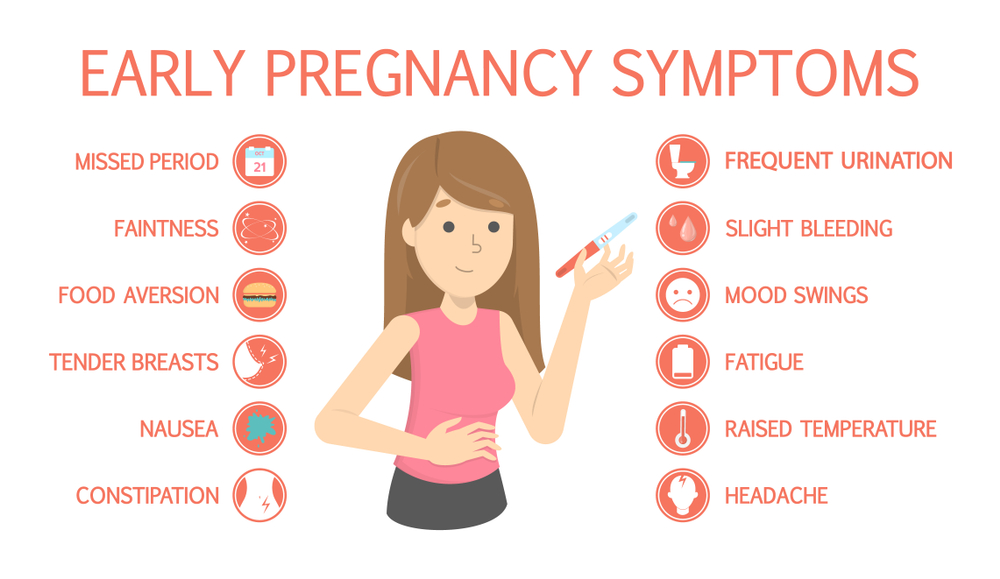 If heavy bleeding has begun, you should immediately consult a doctor.
If heavy bleeding has begun, you should immediately consult a doctor. Approximately from 5 to 20 weeks, the discharge should be the same - transparent or whitish, in small volume, odorless.
Late pregnancy discharge
From the 20th to 40th week of pregnancy, the discharge is normally white, free from impurities and an unpleasant odor.
In the last week before childbirth, the discharge may become thinner. If they are very abundant, leakage or discharge of amniotic fluid is possible, which requires a visit to a doctor.
Characterization of pregnancy discharge by color
Normal discharge should be colorless or white. A change in color and consistency may indicate the development of a disease or complications of pregnancy.
Bright or dark yellow discharge most often occurs when inflammation develops. Grey-green and green may result from infection. Thick white discharge speaks about it - as a rule, candidiasis manifests itself.
 Brown discharge may be due to slight bleeding.
Brown discharge may be due to slight bleeding. Oxford Medical says it is important to consider not only the color of the discharge, but also its smell, volume and consistency. A sharp and unpleasant odor appears only with bacterial or fungal diseases, so it should by no means be ignored. Also, an alarming signal is a strong increase in the volume of secretions, a change in structure, foaminess and other deviations from the norm.
There can be many reasons for abnormal discharge. To find them out, you need to conduct examinations, and then, if necessary, treatment.
Bloody discharge during pregnancy
The appearance of bloody discharge at any stage of pregnancy is a reason to immediately consult a doctor.
The exception is a small spotting in the first weeks (usually coincides with the date of the expected menstruation), which indicates the implantation of the embryo. At this point, capillaries and small vessels can be injured, which causes light bleeding.
 Normally, it is very weak, not accompanied by pain or other unpleasant symptoms.
Normally, it is very weak, not accompanied by pain or other unpleasant symptoms. Blood-streaked discharge may also occur on the eve of childbirth as a result of cervical dilatation. This is normal, but a doctor's consultation is required.
In other cases, both in the first and last trimester, any discharge from pale pink and brown to red is a dangerous symptom. The violation may be minor, but it is necessary to conduct an examination.
Bleeding can be caused by:
-
hormonal disorders;
-
cervical erosion;
-
cysts;
-
fibroids;
-
inflammatory and infectious diseases;
-
ectopic pregnancy;
-
miscarriage;
-
placental abruption;
-
threatened miscarriage or premature birth.
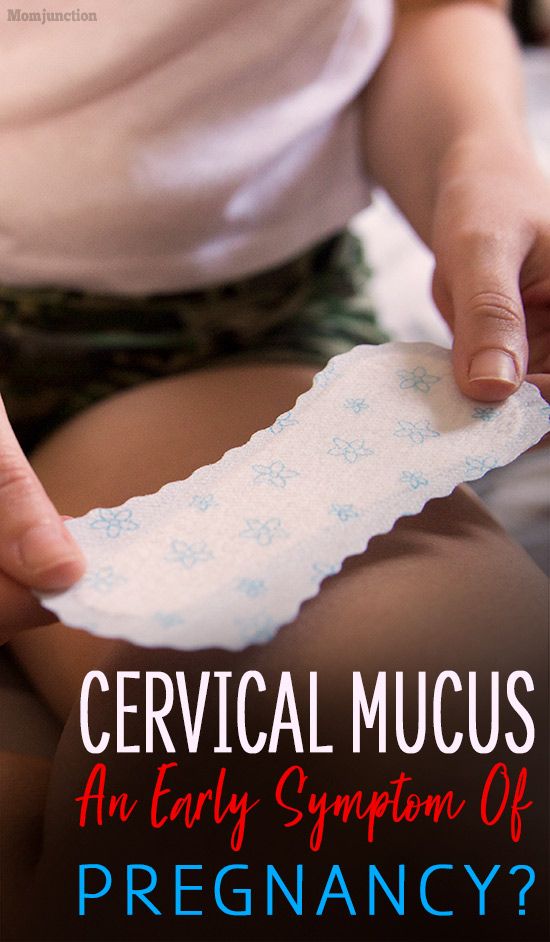
-






